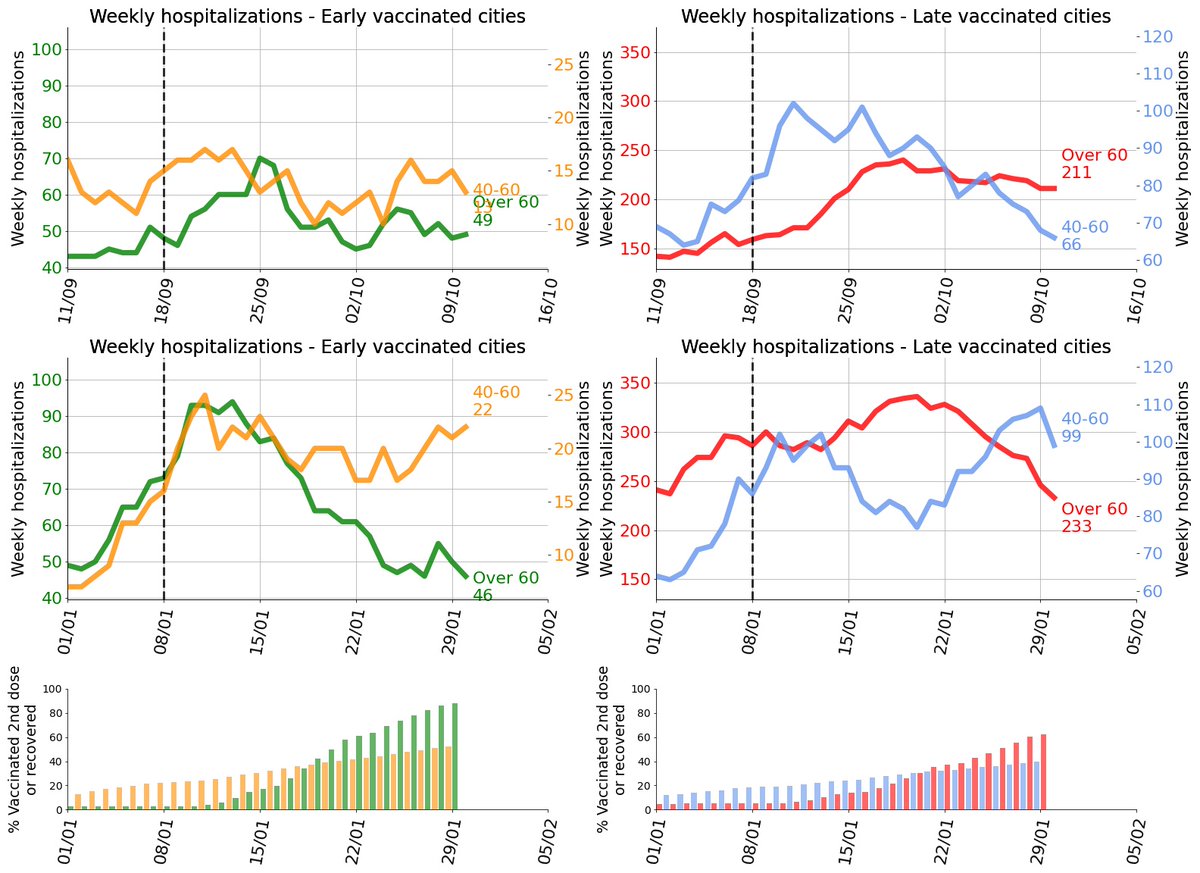
In recent days two new pieces of evidence have come out of Israel about the effect of the vaccination drive, showing good news about both individual-level and national level effects.
1/7
1/7
One is a study from Maccabi HMO (link further in the thread).
The other is one I’m a part of w/ @H_Rossman @GorfineMalka and @segal_eran , and is explained in the thread here:
2/7
The other is one I’m a part of w/ @H_Rossman @GorfineMalka and @segal_eran , and is explained in the thread here:
https://twitter.com/segal_eran/status/1355989129838911490?s=20
2/7
A while ago I discussed the distinction between vaccines' effects on an individual level vs. the national level.
Even if vaccines protect individuals, that's not enough to protect an entire community, due to uneven distribution and uneven effectiveness
3/7
Even if vaccines protect individuals, that's not enough to protect an entire community, due to uneven distribution and uneven effectiveness
https://twitter.com/ShalitUri/status/1351997735415771137?s=20
3/7
The Maccabi HMO study gives some encouraging results for the individual level question, focusing on the 1st dose of the Pfizer vaccine.
medrxiv.org/content/10.110…
4/7
medrxiv.org/content/10.110…
4/7
They show that comparing days 1-12 vs. days 13-24 post vaccine, infections are reduced ~50%. See detailed discussion here:
5/7
https://twitter.com/RazRaanan/status/1355808705070194688?s=20
5/7
Our work gives some positive signs on the national level. We see that cities that were quick to vaccinate are seeing faster reductions in hospitalizations compared to slower cities, and that this effect is only for the 60+ who were indeed the first population eligible. --->
6/7
6/7

Comparisons to previous lockdown show different dynamics back then, strengthening our hope that what we're seeing is indeed due to vaccines.
More results in the thread
The analysis so far is descriptive, but we'll follow up with a more formal one soon
7/7
More results in the thread
https://twitter.com/segal_eran/status/1355989129838911490?s=20
The analysis so far is descriptive, but we'll follow up with a more formal one soon
7/7
Adding some thoughts following a question from @horowitz_b.
I know I speak not only for myself when I say we were expecting to see earlier and stronger effects of the vaccine.
Some hypotheses on why that hasn't happened:
I know I speak not only for myself when I say we were expecting to see earlier and stronger effects of the vaccine.
Some hypotheses on why that hasn't happened:
1. We know early vaccinators were from areas with less infections (see @MDCaspi tweet). Moreover, it is reasonable to assume that even within each population group, early vaccinators were the people who were more careful throughout the pandemic.
https://twitter.com/MDCaspi/status/1352590064900038662?s=20
2. The effects of the vaccines for 60+ or 70+ are probably not 90% reduction within two weeks, as we hoped following the Pfizer trial results.
3. The effects might not be 90% reduction even after full dose, especially for older people, possibly due to new variants.
3. The effects might not be 90% reduction even after full dose, especially for older people, possibly due to new variants.
4. There might have been infections at the vaccination sites, which were often not properly ventilated. While this seems to act against pt. 1 above, it might complicate the analysis because it shifts the infections in weird ways making comparisons to the previous lockdown harder.
5. And as @yogevmh brought up - vaccinated people might be less cautious reducing the effectiveness of the vaccine.
https://twitter.com/yogevmh/status/1356159184027455489
• • •
Missing some Tweet in this thread? You can try to
force a refresh



